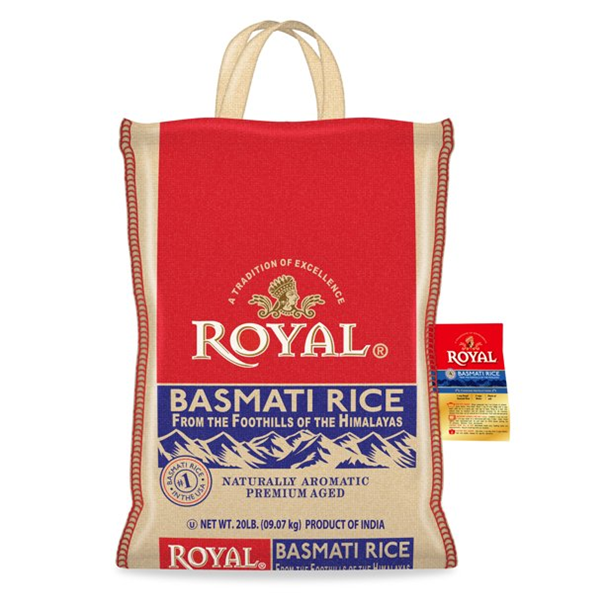Improve Margins: How to Do it During A Recession
February 22nd, 2023 (Updated 03/09/2023) | 11 min. read
A recession can be a challenging time for businesses, as reduced consumer spending and increased competition can make serious dents on your organization’s sales and margins. However, with a little creative and positive thinking, a recession can also be viewed as an opportunity for your company to reevaluate its core pricing strategies and make systemic changes that can improve margins for your business. One key area to focus on is increasing margins. By improving margins, businesses can increase profitability and ensure that they are well positioned to weather the economic storm.
At Pricefx, as a next-gen, native-cloud pricing software provider, we have spent more than a decade answering all manner of pressure points from our customers including assisting them in managing through tough times of sudden and extreme change including inflation and recession.
It’s important to note that improving margins is not a one-time process but a continuous journey that requires ongoing evaluation and adjustment. By developing a plan to increase margins and implementing it consistently, companies can ensure that they are well positioned to navigate the challenges of a recession and emerge stronger on the other side once things improve.
So, let’s dive right on in by introducing the top 4 ways your business can combat rampant recessionary pressures and grapple with keeping persistent price fluctuations under control.
The Top 4 Ways Your Business Can Look to Improve Margins During a Recession
There are a range of strategies that companies can implement to improve margins during a recession, including reducing costs, pivoting pricing strategies, maintaining a laser-like focus on innovation and sustaining an ongoing customer-centric perspective. Of course, there are other methods and approaches that could apply specifically to your business. However, for the purposes of this article, we will look at these 4 general ways that should apply to most businesses as they look to improve margins during a recession.
1. Creative Cost-Cutting
During a recession, businesses often face a decline in sales and increased competition, making it challenging to maintain profitability. In such situations, it becomes crucial for businesses to look for ways to reduce costs and improve margins.
It is important to approach it creatively to find opportunities that other businesses may not be considering. Here are a few creative cost-cutting strategies that can help businesses improve margins during a recession:
- Reevaluate supplier relationships: Businesses should review their relationships with suppliers to see if they can negotiate better prices or negotiate rebates and discounts for early payments. This can help businesses reduce their costs without sacrificing quality.
Another transformation to consider for B2B companies in a recession is to transform discounts into rebate programs based upon the sales performance of your customers.
Passing any risk onto customer performance rebate targets rather than placing unnecessary pressure on your margins may brush your organization with a recession-proofing veneer.
- Streamline processes: Processes that are inefficient or duplicative can be a major source of waste in businesses. By streamlining processes and eliminating unnecessary steps, businesses can improve their efficiency and reduce costs.
- Leverage technology: Technology can play a crucial role in reducing costs, whether it is through automating manual tasks or improving communication between departments. By investing in the right technology, businesses can reduce costs and improve margins.
Implementing an automated pricing software solution can help you isolate and therefore act in a target fashion on addressing your organization’s inefficiencies.
- Emphasize employee training: Investing in employee training can help businesses improve their overall efficiency and reduce the costs associated with mistakes and inefficiencies.
- Consider alternative office spaces: Renting a smaller office space or working from home can significantly reduce a business’s overhead costs.
- Reevaluate marketing and advertising: Businesses should review their marketing and advertising strategies to see if they can reduce costs while still reaching their target audience effectively using alternate channels.
By considering alternative approaches and leveraging technology, businesses can reduce costs and maintain their financial stability in challenging economic times.
2. Put Yourself in a Position to Pivot Your Pricing Strategy on the Fly
Changing your company’s pricing strategy in a recession could be key to unlocking your organization’s potential margin improvements during a recession.
Sometimes during a recession, the chances are that you will be looking to hold your margin steady as there is no price elasticity remaining in the market. You may operate within an industry sector where the prices are not elastic anymore and you will not be able to change your pricing strategy.
The beauty of having a pricing software solution in this situation is that you can quickly determine and implement a price change. And remember, that could be a lightning-fast (20 minute) increase to your entire global price list across 100 000 SKUs or more, with little to no chance of margin leakage occurring due to unnecessary manual pricelist update processing delays.
The price list impact simulation functionality of some pricing software even allows you to assess the business impact of an intended update of a price list before applying it to the market while considering all elements of the related price waterfall, including special price agreements. It provides a visual comparison of a simulated price list change scenario with the current status quo, as well as all relevant calculation outputs to evaluate intended changes.
You could publish that price change and then come back and use some of your pricing software’s analytics function to see what happened to your demand, the changes in your customer count, and unearth what happened to your margins due to the changes. What’s more, with a flexible pricing system, adjust those prices – either down if you had a bad outcome – or potentially price your products even higher to make hay while the sun shines. You may discover that your customer’s willingness to pay is higher than you may have originally anticipated, even in a recession.
It may depend on the industry sector that your company is engaged in. If, for example, your company is involved in the Food & Beverage industry sector, even in a recession there is always going to be demand for products. Even in a recession, price increases can continue to be passed on, because everybody needs to eat and drink. That is a sales environment whereby food and beverage companies can strategize and implement their preferred pricing strategy.
On the flip side, not everyone needs a leather jacket, a designer watch, or the latest fashions off the catwalk in Milan. Discretionary spending on luxury items will almost always decrease in a recession, making it far more difficult to switch to an aggressive pricing strategy when your market is tightening its purse strings and spending is reined in.
In a recession, companies really do need to stop and evaluate; ‘which things must I do right now?’ and ‘which things can potentially wait until this recession eases?’ In that kind of economic climate, customers become much savvier, and the sale of luxury items generally suffers.
In a recessionary environment where your business is frequently considering multiple courses of action and being quick to act as you try to save every penny and close your margin leakage gaps, having a different pricing strategy that you can switch to on the fly with the use of automated pricing software is a definite advantage.
During a recession, businesses become hyper-sensitive to what their competition is doing with their prices. Having an awareness of what your competitors are doing is key. Many distributors have access to competitive data and ingesting that into your pricing software to use it as part of your pricing strategy to move, set or switch your pricing will become a key differentiator during a time of recession. While blindly following competitors may not help you increase margin in a recession, following competitors using strategic guardrails will and it will allow you to focus on retaining customers.
3. Creative Innovation
Failing to innovate during a recession can be a suicidal step for your business, Sure, your business may need to be frugal at times and rein in expenditure. But shutting off the innovation pipeline is fraught with danger. In previous recessions, we have seen organizations decrease research teams, cut R&D budgets and halt even minimal viable product development. When those recessions ended, those businesses found themselves scrambling to regain market share, confronted by the challenge of new competitors in their marketplace, struggling to secure funding and/or recruit lost talent to implement their programs.
Innovation is not simply a lever that can suddenly turn back on when economic climates improve. Think about it like a dial that can turn up or down in response to market conditions.
As a result, you need to innovate smarter and more creatively. You may need to innovate with potentially less people and less capital coming in, but you do need to continue to move forward with innovation, which is inherently going to increase your margin. Those innovations are going to create efficiencies that are going to make your processes leaner.
Remember, innovation is not only related to technology.
Whatever the innovation is, it will need to value-add to your business.
It could be something as simple as using your pricing software to identify that the demand for your 2lb bags of rice is greater than for your 20lb bags of rice.
What’s more, you have identified that you can sell those 2lb bags of rice at $2.99, while those 20lb bags only attract buyers at $19.99.
That is $10 of margin improvement per 20lbs of rice.
Repackaging innovation for improved margins anyone?
Innovation can be something as great as coming up with a new product that you can market (Beyond Meat Burgers for example) to new segments (vegetarian burger lovers) of customers that you have never targeted before or want to target.
The changes you are making do not have to be huge changes but they must be changes that allow you to move forward. Even re-inventing the past into something more marketable is a great way to innovate.
For example, as the mental toll of excessive smartphone scrolling becomes widely understood and digital detox gains in popularity, consumers are seeking to minimize and simplify device usage.
While other smartphone manufacturers rush to develop ever-advanced features, the Light Phone is an object of extreme minimalism that does only three things – calls, texts, and alarms.
The moral of the innovation story is that small or simple innovations can be just as valuable to your margins as a groundbreaking invention. Getting granular with pricing software may help find those small yet potentially powerful value points.
4. Retain Focus on Your Customers
Ask what your customers want and need from you during a recession and retain loyalty wherever possible as those customers who stick with you will invariably keep buying once the economy improves. It may come as a pleasant surprise that your customers pay more for one of your company’s products or services, particularly if you are the sole supplier, or your product helps them keep their head above water once the economic seas get choppy.
It could even be that your product is a core component for their key offering and can assist them to leverage into their own products value proposition, helping them survive the recession and peak out the other side once the economy improves.

Consider targeting populations of customers you are not currently aiming for. Think about how customers access your products. If they are having trouble accessing your goods, consider doing whatever they require to get their hands on your products such as adding delivery and bulk pick-up services or even subscription rates.
What’s more, if you have only ever dealt in B2B sales, consider adding a B2C sales channel, or vice versa. Times are changing and the lines between how B2B and B2C customer purchasing habits are now blurring under the weight of a generational shift.
Getting Started Improving Your Margins in a Recession with Pricing Software
Now you know 4 methods that can help you improve your company’s margins in a recession.
If you are searching for business improvements and not simply looking to ‘hang in there’ during a recession, then a comprehensive pricing software solution like Pricefx can assist you to react intelligently, making evidence-based pricing decisions based on the customer data of the very people who love your products.
If you already know that a pricing software solution will fit your company’s needs, this article below can help you finalize the precise type of pricing software you require for your business:
On the other hand, if you have already narrowed your pricing software search down to Pricefx, talk to one of our pricing experts right now to get started:






